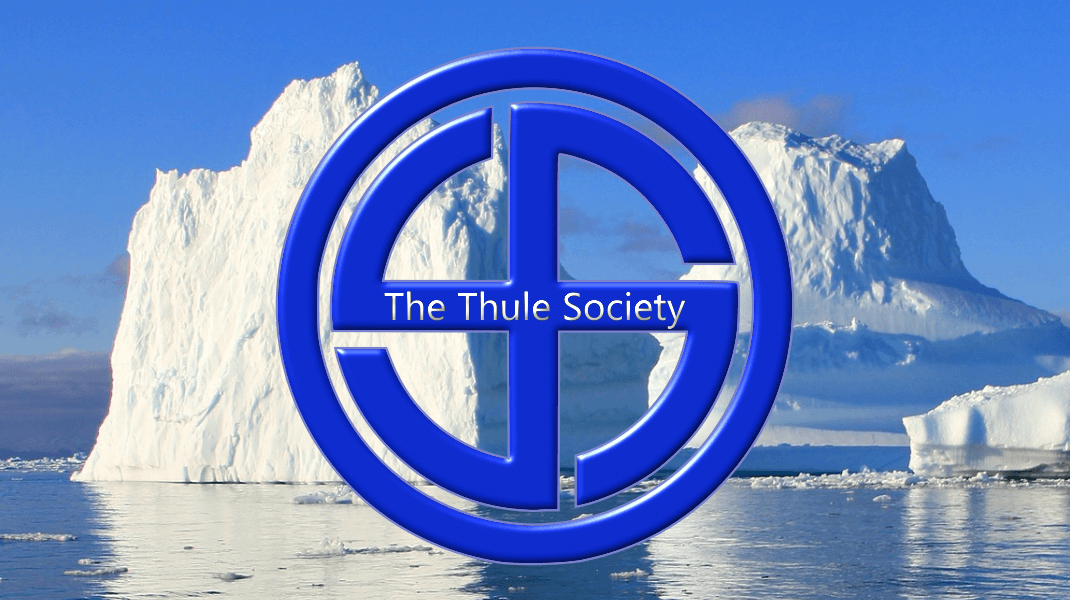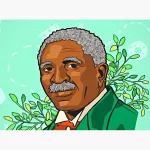THE EARLY HISTORY OF UNITED STATES AND LATIN AMERICAN DIPLOMATIC RELATIONS
(Race, Culture, and The Racialist State)
Note: A philosopher once observed that among the citizens of every nation there can be found what might be called “superpatriots.” If a given nation ever succeeds in alienating any members of its core of superpatriots, then what results is not a general sense of disillusionment like you might find in the general population, but instead, you wind up with a group of people who have a strong sense that they have been deceived and betrayed. From out of an overwhelming feeling of having been betrayed, a dangerous Revolutionary Spirit then arises.
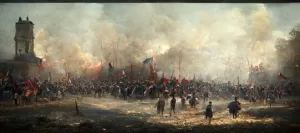
Preface: Red Sky in The Morning
When I went to college back in 1984, I obtained a degree in civil engineering. In my freshman year, I had to take a survey course in American History. While I was taking this basic history course, the professor informed us that we had to do a book report as part of the course; however, nobody except for me actually wanted to do anything serious or in depth for this assignment because they were only enrolled in this class because they had to be. I decided that I wanted a challenge for this book report assignment, so I resolved to produce something really interesting. After resolving to write something interesting for my mandatory book report, I went to the library to find a fitting book to discuss for this assignment. After looking around the library for a while, all I saw on the shelves were just your standard elementary stuff…then things got weird.

As I was wandering among the shelves of books, I discovered something rather unusual. When looking at the outside of the library, I knew that it had a great stained-glass window on one side, yet I was unable to locate this stained-glass window from the library’s inside. However, for some reason I got really curious about the library’s large stained-glass window that afternoon, so I went looking for the room within the university’s library that was on the other side of the library’s curios and outsized stained-glass window.
While walking among the long lines of bookshelves, I finally encountered another wing to the library that was not being maintained by the custodial staff. After entering that section of the library that was not being maintained, I saw that this place was dimly lit by light from an unknown source and all of this area’s books, bookshelves, and floors were covered by a thick layer of dust. After entering this hidden pirate’s cove of books, it was obvious that nobody had been back there for years. After breaching the library’s neglected and quasi-secret wing, I slowly walked deeper into this mysterious and gloomy grotto of grimoires. As I explored this dragon’s lair and treasure trove of hidden scrolls and tomes, my shoes carved deep footprints in the antediluvian layers of dust which decorated this cave’s floor.
Like a moth to a flame, I continued to move towards the source of this area’s mysterious light, then I beheld it — the great dust-caked stained-glass window. This mysterious colored glass portal to another universe overlooked a long-disused study area with tables and chairs, and some of these old chairs were made of just bare wood, and others had leather coverings, but all of the chairs in this secret nook were caked in the same layer of dust as the floor. After exploring my university’s secret library, I remember thinking to myself, “Now this looks promising.”

After arriving in this secret Pharo’s tomb that was filled with dusty old texts, I started going over to the nearby shelves and brushing off their ancient dust patinas in order to see what was available. I was not exploring this place for very long before I found a book that really piqued my curiosity. The book in question had a plain dark blue cover with a gold-lettered title that read, “A History of United States and Latin American Diplomatic Relations.” After discovering this mysterious volume, I carried it closer to the light careening through the sanctum’s big stained-glass window and started leafing through its musty but inviting pages. After perusing this mysterious blue and gold artifact for a little while, I decided that it would do for my upcoming book report, although I still had no idea what I was really holding in my hands.

The image above is furnished courtesy of unsplash.com
I brought this mysterious old printing to the library’s checkout desk, and I remember the librarian saying to me. “I had no idea we had anything like this. Where did you find it?” So, I told her. In response the library clerk replied, “Nobody has gone back there for years. You must really be serious.” I just grinned and shrugged my shoulders in response to her comments. After I checked this book out, the library clerk referenced old library records and discovered that I was only the second person to have ever check this book out. I soon learned that the only other person to have ever checked this book out was a long-dead visiting professor who was there doing academic research of some type. So, after checking out this odd book, I took it back to my dorm room and started reading through this menagerie of words that was going to totally transform my way of thinking from then on out.
Introduction: Background of the Book
First of all, I quickly learned that this unusual tome was written by a senior member of the US State Department. I also discovered that only around 30 copies of this book had ever been printed, and this was the case because the publication in question was only intended for the eyes of the topmost United States State Department Officials. To phase it another way, this book was actually a classified and confidential document that was never intended to be read like a normal book. One must also understand that this book was never intended to be read by anybody outside of a tiny circle of officials who were at the very center of things. This leather-bound assortment of information contained official records of diplomatic exchanges between the United States and many Latin American countries up to the time it was written, which was many years before I had ever picked it up.

This rare opus contained copies of various types of documents which were tied together by an explanatory narrative. This rare volume read like a dictionary as they say, so it was not an easy or fast document to study by any means. The most pertinent piece of information contained in this magnum opus was the Earth-shaking portion that covered Southern Diplomatic dealings during the Antebellum Period. After studying this dusty old omnibus, I learned that what the members of the US State Department’s inner sanctum actually knew and what nearly everybody else only thought these men knew were two entirely different matters.
Part One: My Epiphany

I will get to what exactly was contained in that old book in the second part; but first, I needed to cover my own transformative experience. The “United States,” as this empire which masquerades as a nation state is currently understood, is already a dead letter, and “America” as we call it and know it today has been a dead letter for quite a while now. The only pertinent question concerning the fate of the Zio-American Empire is this: Just what is going to take its place? If the American Empire is really just a zombie or an animated corpse that still somehow manages to shamble around despite visibly rotting away, so this zombie that is the Zio-American Empire is really neither truly alive nor properly dead. In high of the Zio-American Empire’s impending demise, I am not engaging in a merely academic exercise by discussing the content of that old dusty book which I read so many moons ago.
In spite of this printing being a very difficult read, I still found it hard to put down. I also managed to read this fascinating old book in less than a week during my spare time, and I meditated long and hard on its contents and their ramifications while I was laying in my bed at night. While I was reading this rare script, my mind and spirit totally caught fire. What had started out to be a book report soon turned into an impassioned personal research project, and my febrile study of this remarkable old scroll inspired a showcase of astute commentary that graced my subsequent book report, and this book report was punctuated by a firework show of intellectual discovery.

While my classmates turned in brief book reports that typically rambled for no more than just a few terse pages, by contrast, I turned in a rather lengthy screed which ran to nearly twenty pages. On the day that my professor returned our papers, mine was the last one to be handed back. Before my professor handed back my graded book report, he held it in his hand for a while, then he looked at it for a moment; next, after holding my report for a while and considering his options, my professor finally looked in my direction and said, “Randall, I want to see me in my office this afternoon. I need to talk to you about this.” Upon hearing these words, I was frankly unsure how I was supped to feel.
That afternoon, I knocked on my professor’s office door at the appointed time, then he asked me to come inside for a talk. After entering my professor’s office, he closed the door behind us, then he motioned towards his desk and said, “Please have a seat.” So, after entering my professor’s office, we both sat down, then he slid my paper across to me. I looked down at the front of my returned paper to see a large “4.0” written upon it in red ink.
After handing my graded paper back to me, my professor said: “Randall, you have the makings of a Real Historian, not just a regular history teacher.” When he said those words, I noticed that there was a copy of the textbook we had been using for our class laying on his desk. I clearly remember having really blasted our course’s textbook in my paper for its many distortions of history, so not surprisingly, my professor eyed the course’s textbook on his desk with a look of unbridled disdain. With a look of contempt on his face, my professor stared at the course book for a little while, then he remarked, “I know the history textbooks that we history professors use are bullshit.”
My professor explained that in the USA (Zio-American Empire), the administrations (Boards of Trustees specifically) of American colleges and universities all tell their professors what textbooks they can and cannot use, in addition to what they can and cannot teach, on top of what they can and cannot say to the general public. Failure to follow these instructions that come from on-high results in any university or college professors who try to escape from their mental plantations immediately losing their jobs and becoming completely barred from ever teaching anywhere ever again. He further explained that if one pursues a Doctorate of History, then in the higher-level courses they can actually begin to learn about real history. As long as the academics who study real history are willing to keep what they discover within the confines of their own very small and cloistered community, then they are actually permitted a great deal of academic freedom.
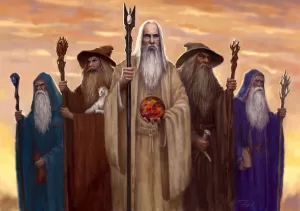
My professor went on, “Unless one is independently wealthy, there are only two kinds of jobs available to a Professional Historian; Teaching and the US State Department.” He continued, “While teaching at the highest levels can be rewarding in many ways, at the lower levels it is oftentimes sheer drudgery.”
He also explained that he had connections with the US Foreign Service, and he noted that he had actually almost gone to work for this agency. Despite considering going to work for the US State Department, he decided against it because his wife was none too keen on living in Ulan Bator, Mongolia, which is where he would have been assigned.
He continued, “Most people when they seek to enter the Foreign Service think of all of the cushy jobs that can be had in Europe as an example. Highly prestigious, highly paid, extravagant lifestyle, hobnobbing with the world’s rich and powerful, chance for advancement to the highest State Department levels in Washington. Not a great deal of actual work to do.”
He went on, “The most extreme example of this is the United States Ambassador to The COURT OF SAINT JAMES. What few people on this planet realize is that the actual name for the Government of the United Kingdom in London is the Court of Saint James, which is a throwback to the days when British Israelism was more openly talked about.”
“These really juicy Ambassadorships, especially the one to The Court of Saint James, always go to members of the super-rich who purchase them. Or as political payoffs to individuals who helped get the current US President elected. No other qualifications are deemed necessary.”
“For postings in Europe, the most anybody else can achieve is a level just below that of an actual ambassador. Which are, shall we say, still dream jobs. In stark contrast, we see how US Embassies are staffed in third-world countries. Through by dint of long and hard work one rises to, if one is lucky, an Ambassadorship in a given third-world country, but no further. In third-world countries, the perks are the opposite of what they are in Europe. As an example, you have to really be dedicated to your job if you want one of those cushy postings in Europe.”
“As a consequence, almost nobody wants an ambassadorial assignment in a third-world country, so these postings all have to be assigned. In which case, the people who accept these undesirable posts spend almost all of their time scheming to get a better position elsewhere, so these people couldn’t care less about understanding the country where they are serving. This common attitude is causing no end of serious trouble for the US in Latin America as one can readily imagine.”
“If you are willing to specialize in Latin America, and to really strive to understand the peoples, their cultures, their history’s, and their politics, then the State Department will snap you up in a split second. They will also likely be willing to help pay for your continued education. Seeing that they are going to get a Latin American Specialist out of it. I know that you have the intelligence for the job.”
He asked me to think about beginning to train for a job with the American State Department’s Foreign Service Department. After hearing my professor’s generous offer, I considered my options very carefully. I finally decided to accept my professor’s offer, then came the proverbial fly in the ointment. I discovered that I would have to be working hand in glove with the CIA if I became part of the Zio-American American Foreign Service Department, and the CIA was a group of individuals who I had come to truly loath. At that time, I grew to loathe the CIA because I had almost gone to work for them years before I was enrolled in college in the capacity of a “Contract Mercenary” in Angola. My dealings with the CIA are another story; none the less, after discovering that I would be working with the CIA, and for the CIA as well, I decided against training to become part of the Zio-American Empire’s Foreign Service Department.
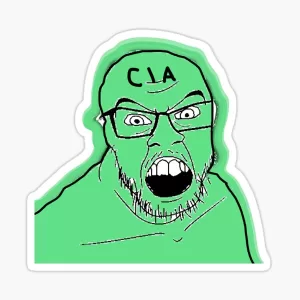
Currently, all US Foreign Service Personnel, at least of any significance, who are stationed in Latin America are actual members of various American Intelligence Agencies and these same people are always engaging in some type of spying and espionage within those countries. These same Department of Foreign Service operatives who are stationed in Latin America are also double-dipping (drawing two paychecks) from the American Taxpayers. Current friction between the United States and Latin America can only be understood within this context.
Just a note in passing: That afternoon we also briefly discussed diplomatic relations between the USA and USSR which were current at that time. During this discussion, I learned that unlike with other embassies, at that time the Zio-American embassy in Moscow had to be staffed by really professional people who knew their jobs forward and backwards because the result of a diplomatic blunder could mean the end of the human race.
Part Two: REAL Economics, Politics, Race, and Culture in The Antebellum United States of America
Just before the appearance of Abraham Lincoln, the Republican Party and the Northern Abolitionists, there was an unpublicized, as far as the general populations were concerned anyway, conference between the governments of various states which then constituted the United States of America, plus the governments of the Central American countries, excluding British Honduras (now Belize) which was of course a colony of the British Empire at that time.
Even by that time, the economies of the US Gulf States (Florida, Alabama, Mississippi, Louisiana, and Texas) were becoming integrated with the economies of several Central American nations as well as those of Cuba (which was still a Spanish Colony at that time) and Venezuela. Representatives of Panama were also present, because even at that time what is today known as the nation of Panama already wanted to have their independence from the nation of Columbia.
While reading this old arcane volume from the hidden corners of my university’s library, I learned that during the years of the Antebellum American South, the Government of Mexico, and everybody else with any insider knowledge and perspicacity knew that Mexico was actually a rather artificial construct as well as the Zio-American Empire. therefore, the nation of Mexico would never enjoy a stable central government because there would always be far too many major regional/ethnic differences. For example, what outsiders call Aztecs called themselves Mexicas, so when we say “Mexicans” we are actually only talking about a rather small portion of the so-called “Mexican” people who ever actually called themselves Maxicas, and these early Mexicas only occupied a relatively small portion of the territory that constitutes the modern nation of Mexico.
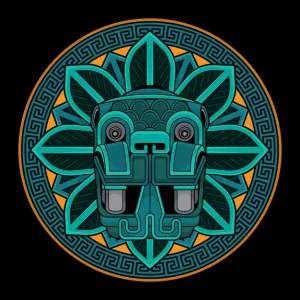
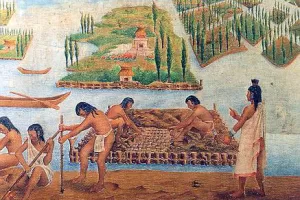
Image of daily Aztec life furnished courtesy of sites.google.com
This conference in question was held with the goal of bringing the Central American States (Guatemala, Honduras, El Salvador, Nicaragua, Costa Rica, and Panama, as well as certain individual provinces of Mexico) into the United States of America… AS STATES. On the Zio-American Empire’s side, this conference was very much a Southern economic thing due to the Southern states’ geographic proximity to Central America and Cuba, but more especially, this conference was a Gulf States Thing. On the Central American side, there were also strong economic incentives to become part of the Zio-American Empire of that time, but there was also much more. The Latin American conference delegations saw being part of the USA as a way of bringing peace and stability to their nations (especially so in the case of Mexico), as well as a way of guaranteeing their rights to self-government.
All of the Latin American conference attendees required only two conditions to be met before signing an agreement to join the United States. First, slavery would not be extended into their territories. The Latin American conference delegations were staunchly against the spread of slavery into their sovereign nations because their populations had suffered terribly under the slavery practiced during the years of so-called “Spanish” Colonial Rule. Second, the Latin American conference delegates insisted that they would only come into a new American Union as states like Texas had done earlier rather than as territories. The Latin American conference delegations insisted that the nations which they represented should only be admitted as full states because they did not want to be treated as second-class American citizens. The Southern States unanimously agreed to these two simple conditions, so all that was then required was for the Northern States to agree on these two simple terms, after that, the conference’s agreements would become a done deal and these agreements would be made public.
Up until this time, the Southern States which represented a primarily AGRARIAN CIVILIZATION, had been a politically prominent group in Washington D.C.; however, Southern interests were beginning to clash with those of the group that had come to dominate the Northeastern states. These Northeastern Interests in question were proto-multinational corporations and financiers who were affiliated with the Rothschild Bank to one degree or another. These Rothschilds-affiliated conference representatives from the American Northeast posed a question to the Central American negotiators: If you are accepted into the USA, then which side are you going to support in Congress? The Central American reply was, “The Southern States of course.” After learning that any Central American or Caribbean nations which might enter the United States as full partners would be very openly pro-Southern, these early Northeastern bankers and corporatists immediately nixed any plans to incorporate any Central American or Caribbean nations into their growing empire.

Despite quickly nixing any ideas about allowing Central American or Caribbean nations to enter into the Zio-American Empire as full states, the conference delegation that represented Northeastern banking interests realized that if they did not act soon to permanently prevent a merger between Southern Gulf of Mexico states and Latin American nations, then such an agreement would end up eventually taking place anyway. The Northeastern delegation members were very concerned that an alliance between the Southern states and any new Latin American member states would quickly gain control over the Government in Washington and convert the country into a confederation that was not friendly to Rothschild bankers and other corporate interests. The Northeastern conference representatives also forecasted that other countries in South America might eventually end up becoming part of the USA, then supporting the Southern States.
The Southern States had only one major defect that could be used as a smokescreen to conceal the Northeastern banksters’ real motivations for subjugating the American Southern States, and that smokescreen was the issue of institutionalized slavery. However, the Northeastern banksters and corporatists were on the verge of losing their last remaining leverage point, which was slavery, due to the rise of a strong Southern Abolitionist Movement. The driving force behind the Southern Abolitionist Movement was an initiative to purchase Black slaves from their owners at a fair market price, then give these newly purchased slaves their freedom. The Southern Abolitionist agenda also planned to enroll freed slaves in special schools that would teach them how to function as free members of society, and interestingly, the most prominent member of this Southern Abolitionist group was a man named Robert E. Lee.
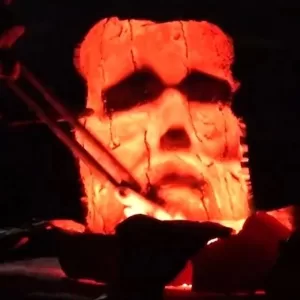
The image above shows the face on the statue of Robert E. Lee that once graced a city park in Charlottesville, Virginia as it is melted down for scrap metal in October of 2023.
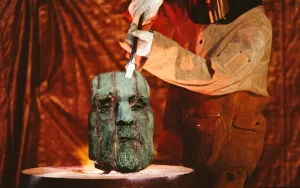
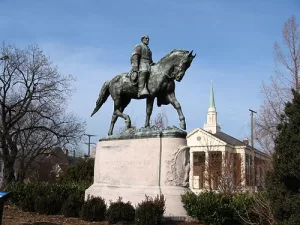
The image above shows the now-destroyed Robert E. Lee Memorial statue that graced the Market Street Park in Charlottesville, Virginia since its consecration in 1924.
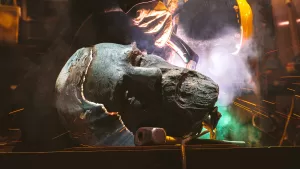
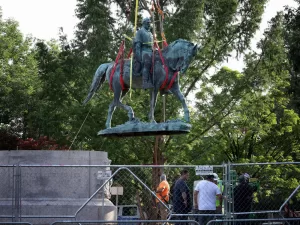
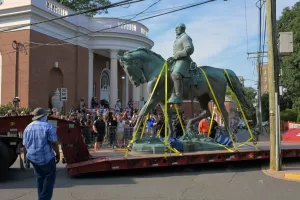
The image above shows the Robert E. Lee memorial statue from Charlottesville, Virginia being taken away for eventual destruction in July of 2021. Image furnished courtesy of news.artnet.com
Following the secret conference to discuss whether or not to incorporate Central American nations into the Zio-American Empire, historians still observe the rise of all-too-familiar Northern Abolitionist factions and organizations, and the Republican (Corporatist) Party that was led by a ruthless and totally unprincipled political opportunist named Abraham Lincoln. The goal of the Northern Abolitionists and the corporatist Republican political party was to destroy the Southern States, then to “Reconstruct” them as colonies of a federalized and corporatized Zionist American Empire. Abraham Lincoln and his corporatist handlers planned to control the Southern states by enforcing institutionalized poverty in conjunction with a divide-and-conquer strategy that would forever pit Blacks and Whites against each other while at the same time reducing many Latin American nations to the status of colonies as well.
——————————————————————————————————————————-
“What us in a name?”
United States of America, as originally conceived.
The word ‘America” actually derives from the name Amaru, which is the Peruvian name for Quetzalcoatl, and we all know what sort of individual he was. The Americas – simply put – are the lands that were once governed by Amaru.
The original 13 “American” states which could also be called Nations because each “State” was considered to be a Sovereign Nation when the “United States” was created, and the “Union” was originally understood to be a Strictly Voluntary Confederation of such independent and sovereign Nations. The United States of America could just as well be called The United Nations of America. (America=Amaru, which is a name for the lands that were once governed by Amaru.)
——————————————————————————————————————————
Race and Culture, (About time, huh.)
The USA (what is today the Zio-American American Empire) was never conceived of as a Racialist State, nor for that matter was the United States ever envisioned to be a culturally homogenous nation. What we colloquially refer to as “America” today was intended to be a Confederation of Individually Sovereign Nations that are united by common interests in a number of areas. That is it in a nutshell.
As the United States of America was originally envisioned, the questions of race and culture were to be decided by each individual nation as it affected themselves. Most, if not all, of these early sovereign states/nations, were expected to be Racialist in character, but only in the way that was best suited to each individual state, be that Aryan or otherwise.

Image courtesy of britanica.com
Conclusion – Where from here?
I have lived all of my life with the results of my Ancestors’ loss of their right to Self-Determination. I have passed my life living as I have in a Colonial State in all but name, so I refuse to treat others as I have been treated. However, that in no way means that I am not a National Socialist, nor does it mean that I do not always put my own Folk first. Being a National Socialist means that there are things that I will do, and being a National Socialist means that there are things that I will not support if they bring dishonor to National Socialism, My Folk, the ever-watchful Spirit of the Great Adolf Hitler, or to the memories of our beloved NSDAP Elders.


Image of Leon Degrelle furnished courtesy of adeyynkaakinde.blogspot.com

Image of Adolf Hitler courtesy of wikimedia.org
We can talk as I have been doing here of how things could have been, but things are as they are now because evil-spirited (((outsiders))) have infiltrated the Lands of Amaru and set his former subjects at each other’s throats as part of a divide-and-conquer strategy. The parasitical influence of these invaders to the lands of Amaru must be terminated once and for all or else there will be no end to bloody misunderstandings that are spawned by these evil ones in their mad quest for world domination. So long as these invaders are here on the soil of Amaru’s two continents, then there will be no peace which will enable us to rebuild or nations, our tribes, our families, or our individual lives.
When the evil ones have been vanquished, then we peoples of the Americas can once again meet face-to-face with respect, then we can finally work to restore the Beautiful Garden that the Americas once were so that Our Folk can live in peace, freedom, and prosperity one more. When the lands of Amaru are restored to peace and balance, then we wil become true Aryan Nobility like our ancestors once were.
Heil Hitler deva!
Randall Lee Hilburn
